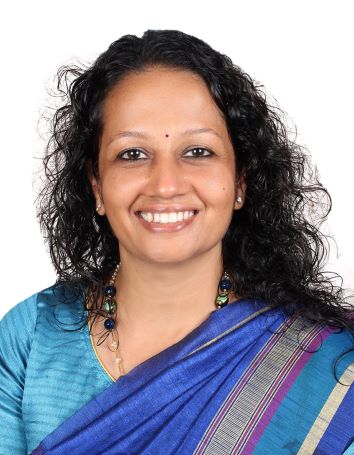Those 30-50 minutes of commute by children from home to school and then back to home on the school bus keeps every parent literally on tenterhooks. Many a times, the unexpected breakdowns, weather conditions or snarls not only raises the anxiety bar but even leads to heated exchanges between parents and drivers, helpers or in-charge teachers.
 Often seen as a small and manageable task by many, but this couple (Jaya Bhura and Rajesh Bhura) from Mumbai back in 2016, took it seriously after themselves as young parents experiencing the anxious waits and delays helplessly. “I would often tell myself, can’t this be made somewhat organized and communicative?” says Jaya Bhura, an alumnus of Tribhuvan University, Kathmandu, who along with her husband, Rajesh an IIM-B graduate and an investment banker together they bootstrapped and started working on developing an app to address this very problem and launched a new company called Chakraview Solutions Pvt. Ltd.
Often seen as a small and manageable task by many, but this couple (Jaya Bhura and Rajesh Bhura) from Mumbai back in 2016, took it seriously after themselves as young parents experiencing the anxious waits and delays helplessly. “I would often tell myself, can’t this be made somewhat organized and communicative?” says Jaya Bhura, an alumnus of Tribhuvan University, Kathmandu, who along with her husband, Rajesh an IIM-B graduate and an investment banker together they bootstrapped and started working on developing an app to address this very problem and launched a new company called Chakraview Solutions Pvt. Ltd.
“For several months, we interacted with people from drivers to parents, principals and bus operators to understand the gaps and then we engaged a technical team to address the issues through a tech solution. Then it was difficult to convince people in the system but we knew a tech solution can turn us into problem solver for many,” recalls Jaya. Their one-app solution called ‘chakraview’ to children’s safety issues while commuting to and from school in buses and vans was made ready and they were fortunate to launch the app with AVM, a Bandra bus operator. By the time, Covid pandemic threatened their operations, they had already expanded to Pune.
During Covid, knowing that people especially the parents are becoming more concerned, they decided to add more features and rebrand, make it robust technically. By using the latest technology to track the vehicles, the app making it extremely simple to track child’s whereabouts for parents and hence reduces their anxiety. The app also facilitates seamless communication between the bus operators/attendants and parents through the app.
In 2023, Bhuras got a funding of Rs 1 Cr for their app, which is now being used by over 30,000 parents and 75 schools in Mumbai and Pune. So far bus operators are the major customers of this app, who pay anywhere between Rs 499 to Rs 2000 (depending on features) per bus per month for using it. The operators can use this app to have access to Admin App and Portal to manage database and generate reports and track their fleet live. They have the option of administering this database for fee collection management and report generation. Parents can also directly sign up for the app.
Talking about the technology and mode of operation used for this App, Jaya says while the tracking is done using GPS like technique, the app generates signals every 30 seconds and parents or grandparents can easily monitor the movement of the vehicle carrying their child. Alerts and messaging about delays is part of the offering. The App is enabled on the device usually carried by the lady attendant on the bus (in her absence the driver carries the app in his smartphone device). In case of need, parents and the bus attendant call use the app for calling as well. The company also offers a dedicated customer service for its solution. The app works well with even low connectivity.
While ideally the app makers would like to reach every nook and corner of the country, their next plans are to expand into Ahmedabad and Jaipur and reach a target of 150+ schools in next couple of years. “We have found bus fleet operators are more open to our solution than schools, but now looking at our success and how it cuts on the administrative and time costs for schools to manage transportation, schools have started looking at third party service providers like ours to relieve them of the consistent pressure and parental inquires. As these cities have both school owned and operator rub buses, we’re going there while getting deeper into more places within Maharashtra,” she adds.
When asked about the scenario of school transportation in the country in light of her nearly eight year intricate association with the segment, she is candid in acknowledging that it still pains her to see children being crammed on auto rickshaws or private vans. “People would spend anything on getting good schools but pay less heed to these 40 minutes where the safety and wellbeing of their child is at stake every day. She feels buses remain the best transport mode for school children for a variety of reasons from safety, affordability to safeguarding environment and making it organized to address.
“When traffic on roads is getting mad every day, our app at least keeps your channel of communication going and makes you relax and manage your schedules,” she says in her concluding messaging.













